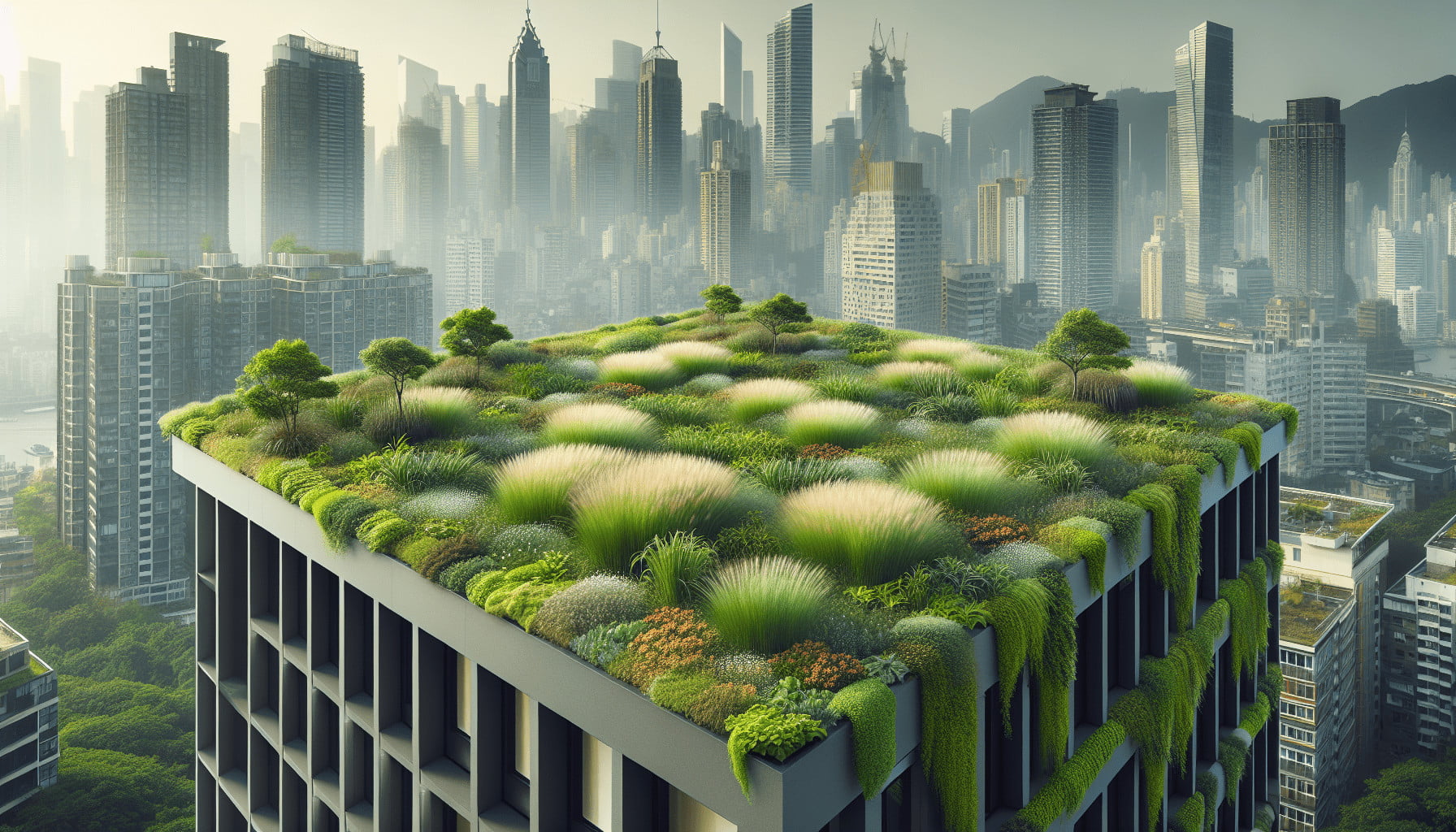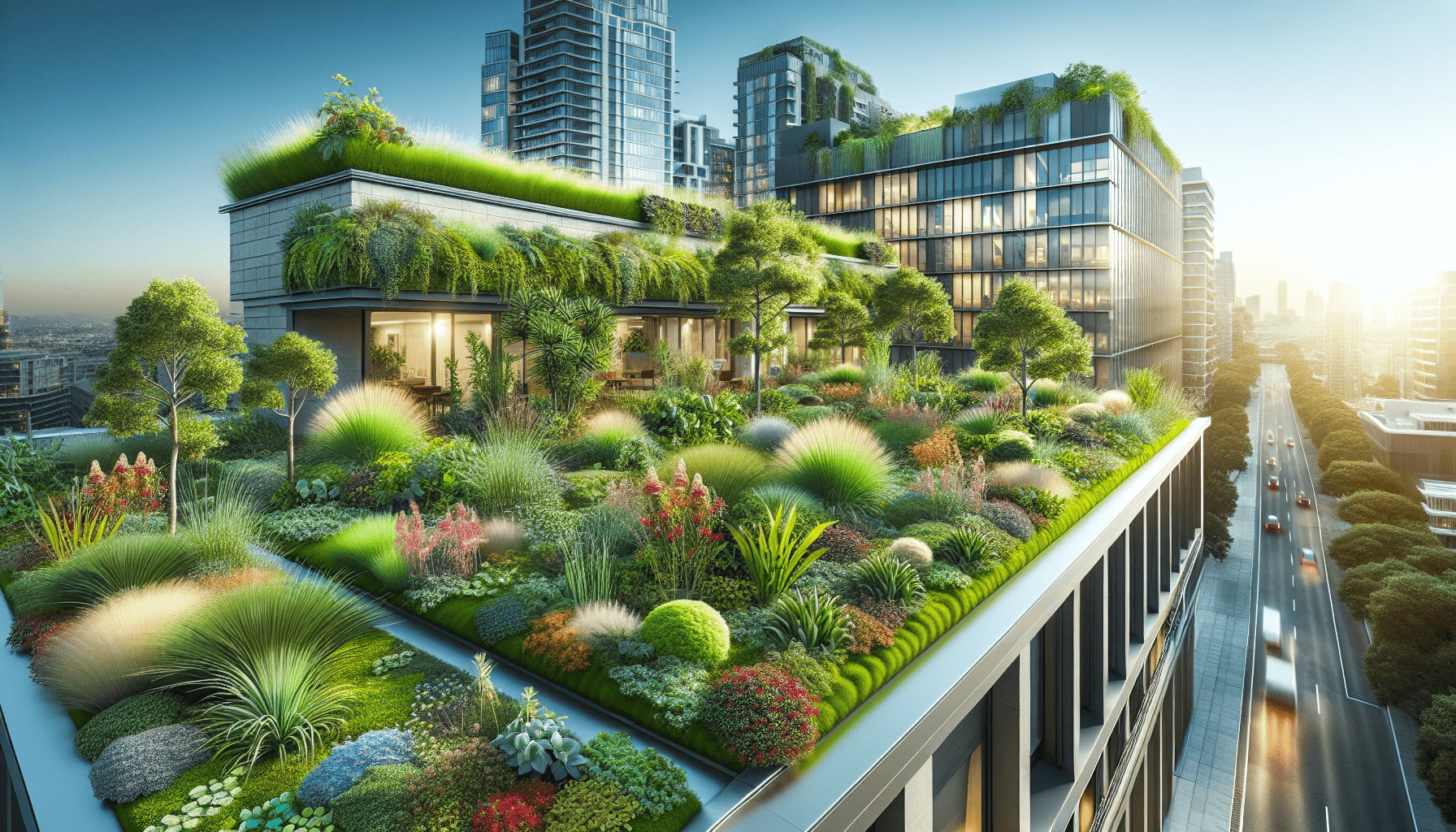Have you ever considered transforming your home’s roof into a lush, green oasis? If you’re drawn to the idea of a rooftop garden or looking for ways to make your home more eco-friendly, a residential green roof could be an excellent option for you. Not only do green roofs add aesthetic value, but they also offer numerous environmental benefits, such as reducing heat island effects, managing stormwater, and providing natural insulation.
What is a Residential Green Roof?
A residential green roof, also known as a living roof, consists of a roof that is partially or completely covered with vegetation, a growing medium, and a waterproof membrane to protect the underlying structure. Imagine a garden on your rooftop—complete with plants, flowers, and possibly even trees. It’s not just about having greenery above; it’s about creating a living, breathing ecosystem that can bring many benefits to your home and community.
Types of Green Roofs
When it comes to green roofs, there are generally three main types to consider: extensive, intensive, and semi-intensive. Each type has its characteristics and is suited to different needs and budgets.
| Type | Description | Maintenance | Weight |
|---|---|---|---|
| Extensive | Lightweight, shallow soil layer, typically under 6 inches, low-growing plants | Low | Light (15-50 lbs/sq ft) |
| Intensive | Heavier, deeper soil layer, variety of plants including trees and shrubs | High | Heavy (80-150 lbs/sq ft) |
| Semi-Intensive | Combines features of both extensive and intensive green roofs | Moderate | Moderate (30-100 lbs/sq ft) |
Benefits of Green Roofs
Green roofs are not just for show; they provide a variety of benefits both for your home and the environment. They help in reducing the urban heat island effect by cooling the air, improve air quality by trapping pollutants, and provide additional insulation, reducing your home’s energy consumption. Moreover, they create habitats for local wildlife and can significantly improve the aesthetic value of your property.
Planning Your Residential Green Roof
To ensure your green roof project is a success, thorough planning is essential. Here are some key factors to consider before getting started.
Structural Assessment
The first step involves assessing your existing roof structure. It’s crucial to ensure that your roof can support the additional weight of a green roof. Consulting with a structural engineer will provide you with the information you need to make informed decisions.
Waterproofing and Drainage
Proper waterproofing and drainage systems are essential for the longevity of your green roof. These elements will protect the structure of your home from water damage and ensure that excess water is efficiently drained away from your roof.
Climate Considerations
The climate in your area will affect the types of plants you can grow on your green roof. Research plants that are native to your region and capable of withstanding local weather conditions, including both hot and cold temperatures.

Designing Your Green Roof
Designing a green roof requires careful consideration of plant selection, soil composition, and irrigation systems. Here’s how to go about it.
Plant Selection
The choice of plants will largely depend on the type of green roof you are installing. For extensive roofs, you’ll likely focus on hardy, low-maintenance plants such as sedums and grasses. Intensive roofs allow for a broader range of plant types, from perennials to small trees. Always opt for native species as they are more likely to thrive and require less maintenance.
Soil and Growing Medium
The growing medium is the substrate in which your plants will grow. It should be lightweight yet capable of retaining moisture and providing necessary nutrients. You can either purchase pre-mixed substrates designed for green roofs or create your blend by mixing soil with lightweight materials like perlite and compost.
Irrigation Systems
Depending on your local climate and the types of plants chosen, you may need to install an irrigation system. Drip irrigation is a popular choice for green roofs as it provides efficient water usage by delivering water directly to the plant roots.
Layer Composition
A typical green roof system consists of multiple layers, each serving a specific purpose. Here’s an overview of the common layers:
- Vegetation Layer: The plants and soil.
- Growing Medium: Provides nutrients and stability to the plants.
- Filter Layer: Prevents fine particles from clogging the drainage layer.
- Drainage Layer: Ensures proper water drainage.
- Root Barrier: Prevents roots from penetrating the waterproof membrane.
- Waterproof Membrane: Protects the roof structure.
Installation Process
After planning and designing, the next step is the actual installation of your green roof. This process involves several steps but can be manageable with the right preparation and professional help.
Preparing the Roof
Clean and repair your roof to ensure it is in good condition. A smooth, debris-free surface is essential for the proper installation of waterproofing layers and other components.
Installing Waterproof and Root Barrier Layers
Install the waterproof membrane and root barrier. These layers are crucial for protecting your roof and ensuring the longevity of your green roof system. This step might require professional expertise to ensure that the installation is thorough and durable.
Adding the Drainage and Filter Layers
Next, add the drainage layer to ensure excess water is efficiently managed. Follow this with the filter layer to keep the growing medium from clogging the drainage system.
Laying the Growing Medium and Planting
Spread the growing medium evenly across your roof, ensuring it’s firmly in place. Once this is done, you can start planting the vegetation according to your design plan.
Setting Up Irrigation
If you’ve opted for an irrigation system, install it after the growing medium and plants are in place. Make sure it’s working correctly and efficiently before leaving it to its automated schedules.

Maintaining Your Green Roof
Like any garden, a green roof requires ongoing maintenance to keep it healthy and vibrant. However, the level of maintenance will depend on the type of green roof you have installed.
Regular Inspection
Inspect your green roof regularly for signs of wear and tear, especially after extreme weather conditions. Check the waterproof membrane, drainage systems, and vegetation to ensure everything is functioning correctly.
Weeding and Pest Control
Weeds can invade even the best-maintained green roofs. Regular weeding is essential to keep your green roof in top condition. Additionally, monitor for pests and address any infestations promptly using eco-friendly methods.
Irrigation and Fertilization
Ensure your irrigation system continues to function correctly and provide your plants with enough water. Depending on the plants you’ve chosen, you may also need to fertilize them periodically to maintain their health.
Seasonal Care
Different seasons may require different levels of care for your green roof. Prepare for winter by ensuring plants are healthy and can withstand colder temperatures. In summer, ensure they are well-watered and can handle the heat.
Sustainability and Green Roofs
Green roofs are a cornerstone of sustainable architecture. They help to reduce a building’s carbon footprint by providing natural insulation and reducing energy consumption. Additionally, they can significantly improve urban biodiversity by providing habitats for birds, insects, and other wildlife.
Environmental Impact
Green roofs play a vital role in urban environments by reducing stormwater runoff, thus decreasing the burden on municipal water systems. They also help to purify the air and contribute to cooling urban heat islands.
Economic Benefits
While the initial investment for a green roof might be higher than a traditional roof, the long-term economic benefits often outweigh these costs. Green roofs can increase the lifespan of your roof by protecting it from the elements, thus reducing maintenance and replacement costs. They also offer energy savings due to better insulation.
Social and Health Benefits
A green roof can provide a space for relaxation, gardening, and even social gatherings. Being close to nature has been proven to reduce stress and improve mental health, making your green roof not just a benefit to the environment, but to your well-being as well.
Challenges and Considerations
While the advantages of green roofs are plentiful, they also come with their set of challenges. Understanding these can help you better prepare and decide if a green roof is right for you.
Initial Cost
The initial cost of installing a green roof can be high. However, it’s essential to consider the long-term savings in energy costs, roof longevity, and potential property value increase.
Structural Modifications
Some homes might require significant structural modifications to support the additional weight of a green roof. This is another area where a professional assessment is indispensable.
Maintenance Requirements
Green roofs are more maintenance-intensive than traditional roofs, especially in the beginning. Plan for regular inspections and upkeep activities to ensure your green roof thrives.
Local Regulations
Before installing a green roof, check local building regulations and guidelines. Some areas might have specific requirements or offer incentives for green roof installations.
Final Thoughts
Designing and installing a residential green roof is a rewarding project that offers numerous benefits for you and the environment. Through careful planning, design, and maintenance, you can create a thriving green space above your home. It might require an initial investment and ongoing effort, but the payoff in terms of environmental impact, energy savings, and aesthetic pleasure makes it a worthwhile endeavor. So, if you’re looking to enhance your living space while contributing positively to the environment, a residential green roof could be the ideal solution.
